MP Board Solutions for Class 9 Economics Chapter 2 – People as Resource
MP Board Solutions for Class 9 Economics Chapter 2 – People as Resource are essential for understanding how population becomes an asset through education and health, as per the MPBSE curriculum. These well-structured answers help students grasp topics like human capital, employment types, and the role of government in skill development. Designed according to the latest syllabus, these solutions strengthen conceptual clarity and improve exam preparation. Ideal for revision and practice, they promote awareness of human development and economic productivity, making them a valuable study tool for scoring well in Class 9 Social Science exams.
MP Board Solutions For Class 9 Economics – People as Resource – Exercise Images
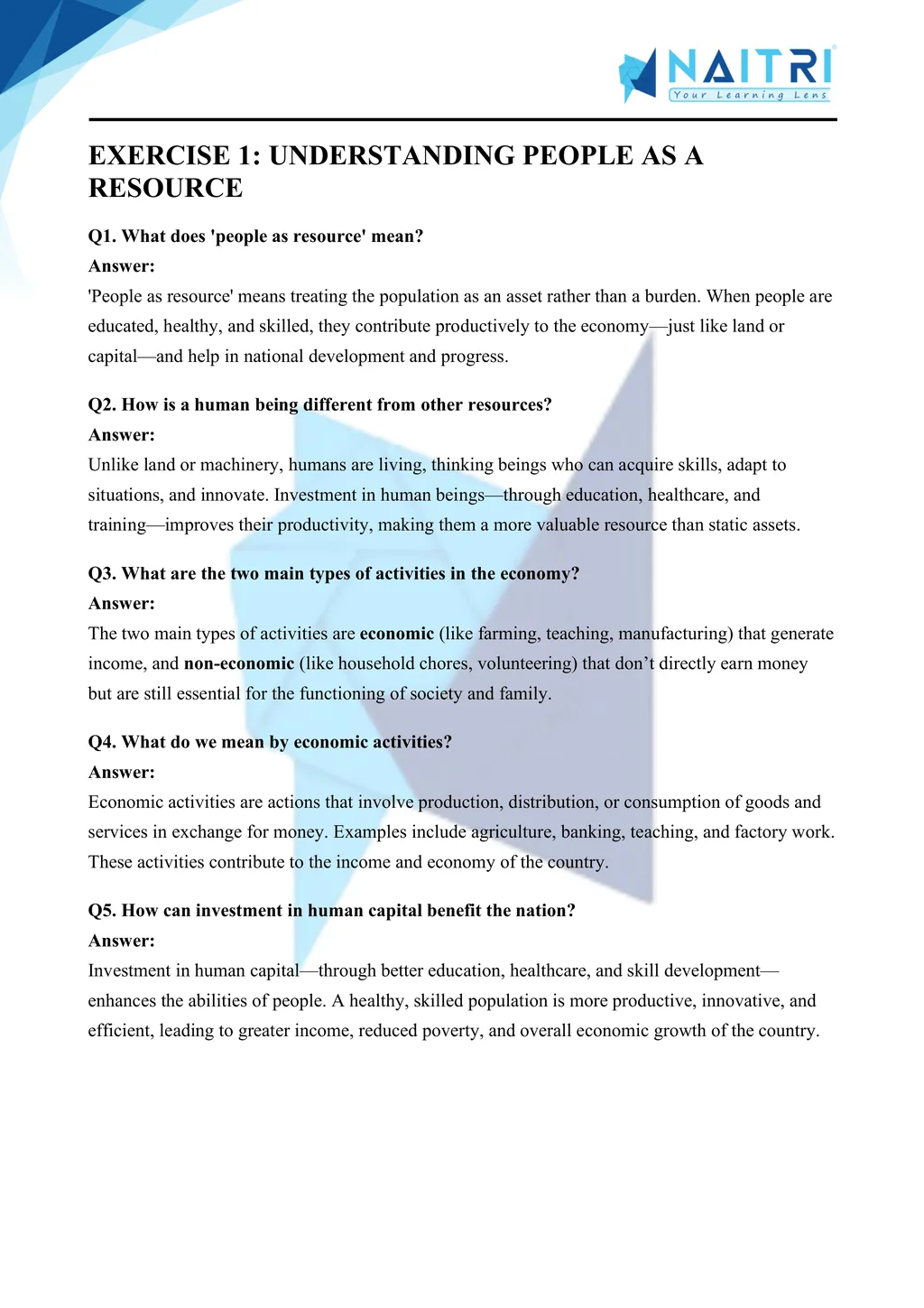
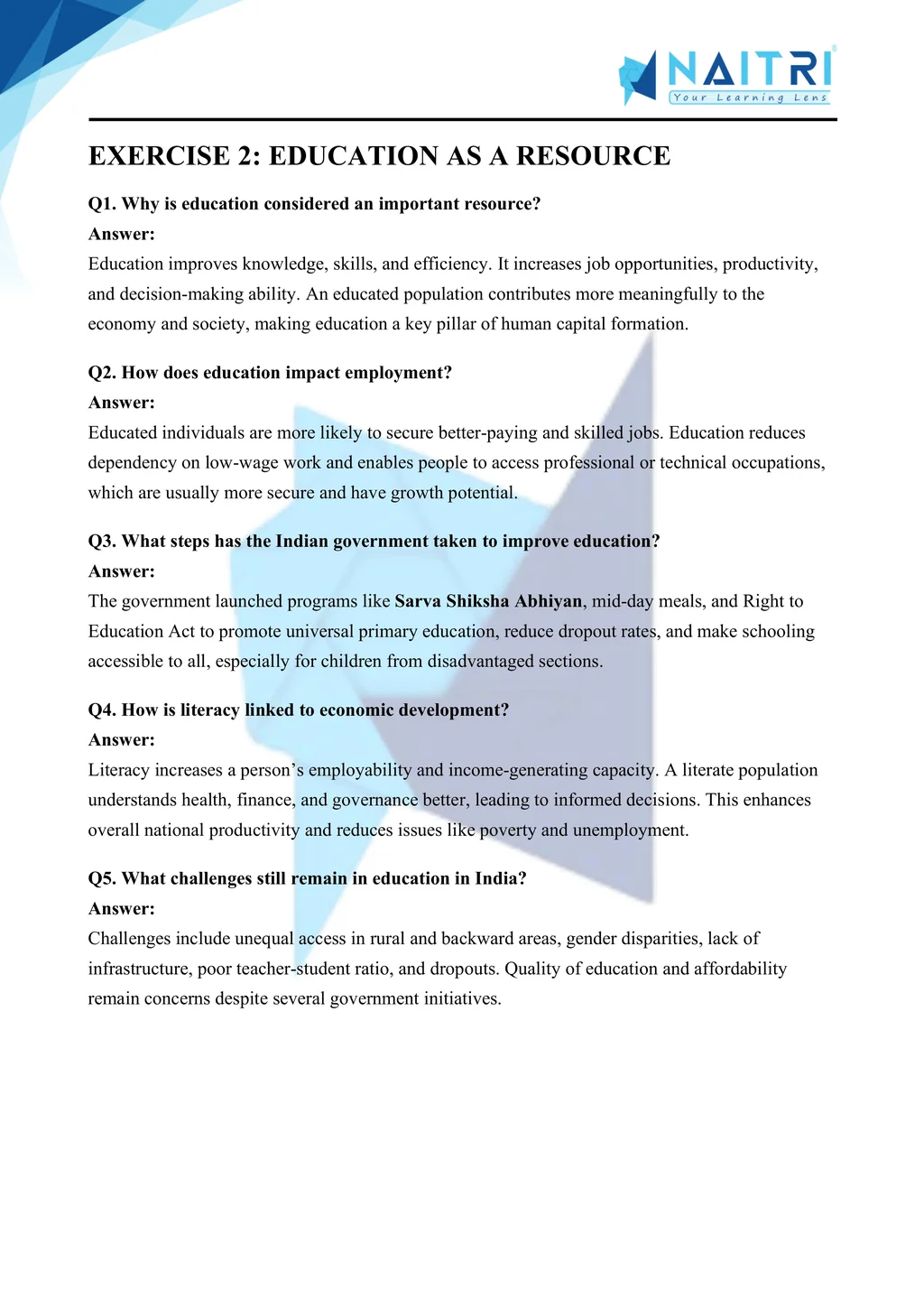
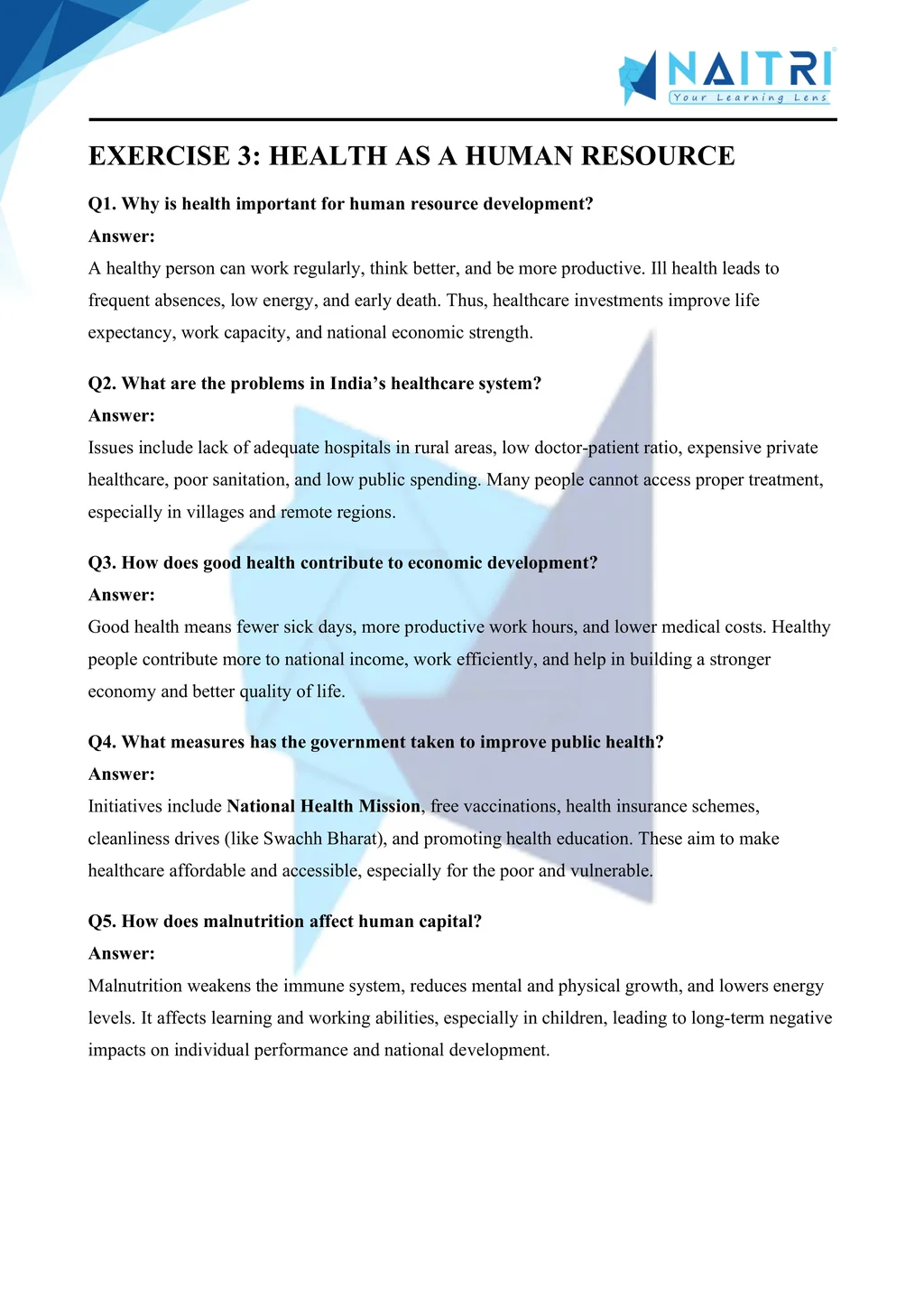
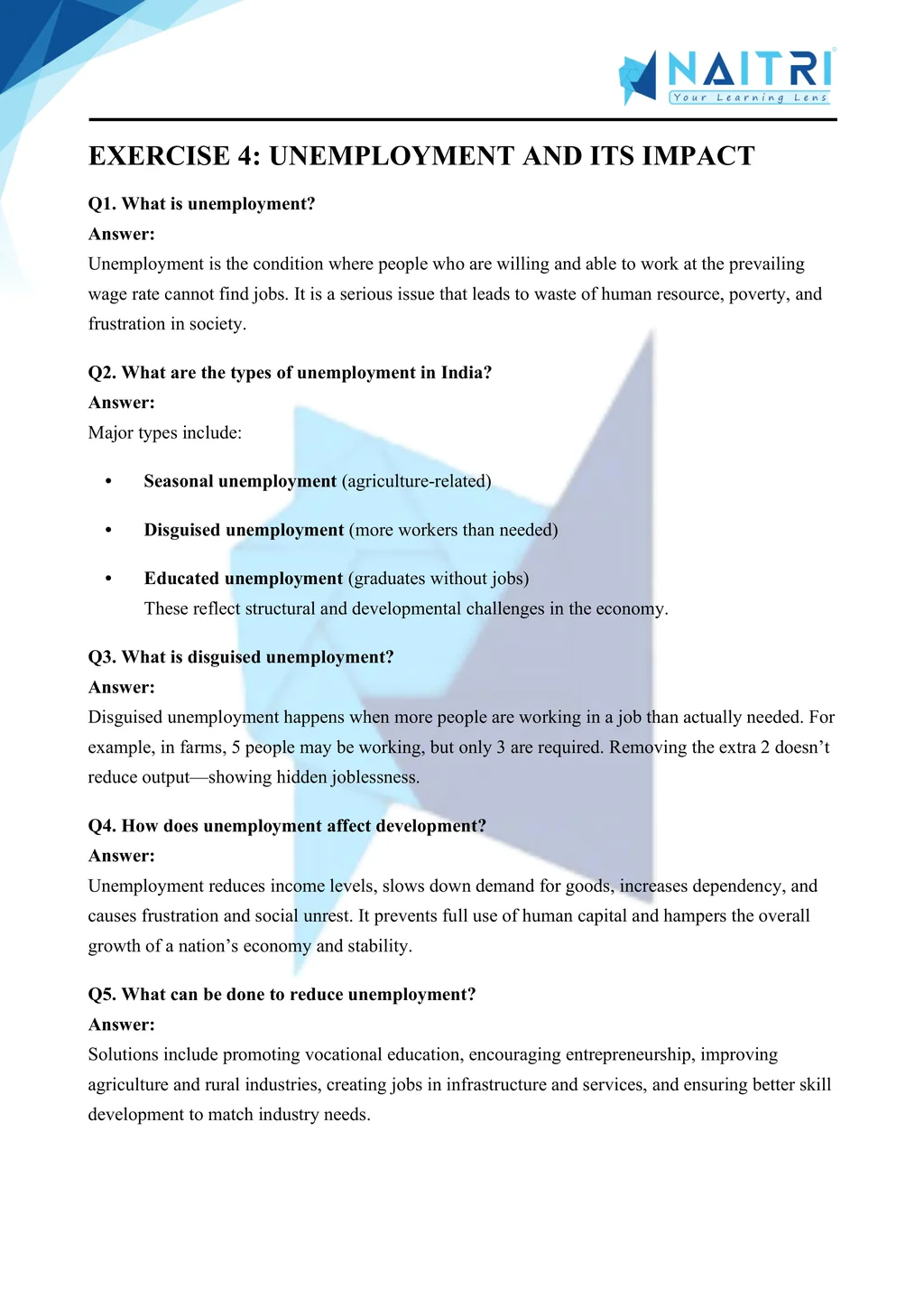
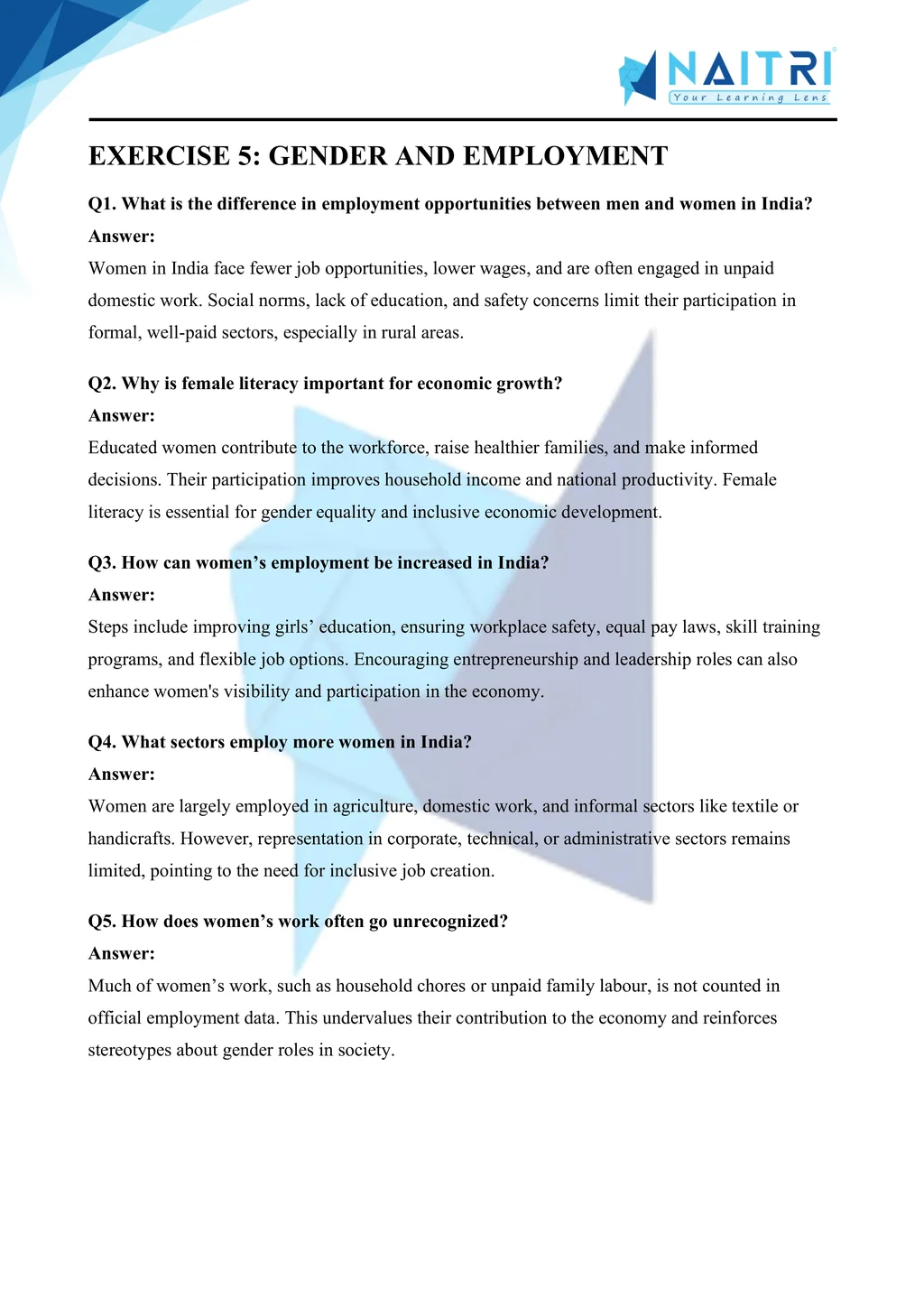
Experience Economics Like Never Before – With AR!
Understanding People as Resource is now more exciting and immersive! With the NAITRI App, you can explore complex economics concepts through Augmented Reality (AR). Watch education empower, skills develop, and human capital contribute to the economy — right in front of you. Our AR-powered lessons make learning interactive, 3D, and fun, helping you retain concepts better and enjoy every topic.



Visualize . Interact . Understand . The future of learning is here
People as Resource – Important Questions with Answers
What is meant by ‘people as resource’?
Answer: The term means viewing people as an asset rather than a liability. Educated, skilled, and healthy individuals contribute to economic growth and national development.How is human capital different from physical capital?
Answer: Human capital refers to skills, knowledge, and health of people, while physical capital includes tools, machinery, and equipment used in production.What is the role of education in human capital formation?
Answer: Education enhances a person’s knowledge, productivity, and employment opportunities, thereby contributing to economic and social development of the country.How does health affect human capital?
Answer: A healthy person can work more efficiently, with fewer absences, leading to better output and contributing positively to the economy.Why is investment in human capital important?
Answer: Investment in education, health, and skill development leads to higher productivity, better income, and improved standard of living.What is the impact of unemployment on the economy?
Answer: Unemployment leads to wastage of human resources, lowers income, increases poverty, and reduces the overall economic productivity of a country.What are the types of unemployment found in India?
Answer: India faces seasonal unemployment in agriculture and disguised unemployment, where more people work than needed in the same task.What is disguised unemployment?
Answer: It occurs when too many people are employed in a job that requires fewer workers. Productivity does not increase with more people.How can unemployment affect the overall development of the nation?
Answer: It leads to low income, social unrest, increased dependency, and lack of economic progress, thus slowing down national development.What is the significance of women in the workforce?
Answer: Women contribute significantly to agriculture, services, and household work. Their economic participation improves family income and national productivity.Why is female literacy important for development?
Answer: Educated women tend to have healthier families, participate more in decision-making, and contribute to the labour force and economic progress.What are the economic activities?
Answer: Economic activities are those that result in income or livelihood, such as farming, manufacturing, and services like teaching or banking.What is the difference between market and non-market activities?
Answer: Market activities involve paid work, while non-market activities include household or voluntary work done without any monetary compensation.What are primary, secondary and tertiary sectors?
Answer:
Primary: Agriculture and related work
Secondary: Manufacturing
Tertiary: Services like education, healthcare, and transport
How does literacy rate affect economic development?
Answer: Higher literacy improves job prospects, increases productivity, encourages innovation, and leads to a more skilled and employable population.What is the role of a skilled workforce in the economy?
Answer: A skilled workforce enhances efficiency, reduces wastage, and leads to higher production, better technology usage, and global competitiveness.Why is training important for workers?
Answer: Training improves skills, increases efficiency, and helps in better use of resources and adoption of modern techniques in various sectors.What are the drawbacks of an uneducated workforce?
Answer: It leads to low productivity, poor decision-making, and limited employment opportunities, thus keeping the country in a poverty trap.How does population become an asset?
Answer: With investment in education, health, and skill development, the population becomes productive, contributing to GDP and social advancement.What measures has the government taken to improve human capital?
Answer: Government initiatives include mid-day meals, Sarva Shiksha Abhiyan, health programs, and vocational training for better employment opportunities.What is the role of the National Skill Development Mission?
Answer: It aims to train the youth with industry-relevant skills, improving their employability and aligning with national and global job demands.Why is youth employment a national priority?
Answer: The youth are a dynamic asset. Their employment ensures economic stability, reduced crime, and sustained development of the nation.How do jobless youth impact the nation?
Answer: Unemployed youth can cause social unrest, increase crime rates, and lead to economic burden through higher dependency and lower productivity.What is the literacy rate in India and its trends?
Answer: Literacy in India is rising, especially among women, but challenges remain in rural areas, needing more efforts in female education.Summarise the role of people as a resource.
Answer: When educated and healthy, people are a valuable resource that drives growth, innovation, and development, playing a central role in nation-building.
People as Resource focuses on how the population can become a productive asset through education, training, and healthcare. It explains the concept of human capital and distinguishes between economic and non-economic activities. The chapter highlights gender disparities in literacy and employment, and discusses how investing in people contributes to economic growth. It encourages students to view the population as a resource rather than a burden.
Related Chapters You May Like
Download Naitri App
Easy, Visual Learning — Right on Your Phone
Learn with Augmented Reality! The Naitri app makes CBSE and MP Board concepts interactive and fun — even in low-resource settings. Watch lessons, complete homework, take tests, and track progress — all in one place. Anytime. Anywhere.
Available on








